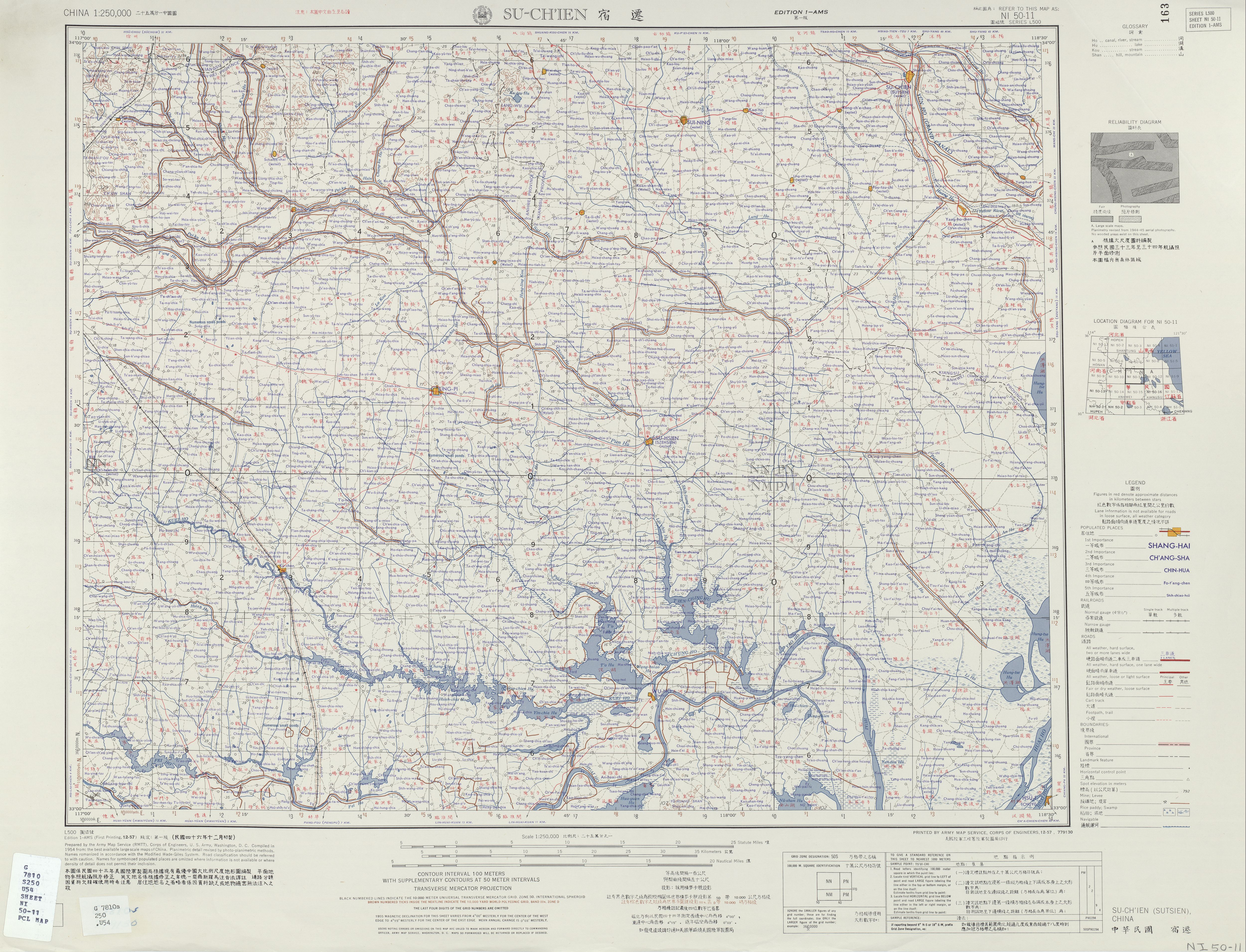|
Suqian Prefecture
Suqian ( zh, s=, t=, p=Sùqiān, IPA: ) is a prefecture-level city in northern Jiangsu Province, China. It borders Xuzhou to the northwest, Lianyungang to the northeast, Huai'an to the south, and the province of Anhui to the west. History Suqian was said to be the site of a military grain store built when the Emperor Yuan of Jin reigned. Thus, the former Xiaxiang county where the store located was renamed Suyu (; means "prepared" or "usually prepared") in 405. Then the county was annexed by Xuzhou and renamed Suqian in 762 because the homophone "yu ()" as the given name of the Emperor Daizong of Tang was deemed to be ineffable. The county was put under the jurisdiction of Huaiyang military prefecture during the Song dynasty, then was transferred to Pizhou after Jurchen's Jin took it. The county was administered by Huai'an military prefecture during 1272–75, but restored as a part of Pizhou afterwards. It was annexed by Xuzhou again in 1733. The area was rife with banditry dur ... [...More Info...] [...Related Items...] OR: [Wikipedia] [Google] [Baidu] |
Prefecture-level City
A prefecture-level city () or prefectural city is an administrative division of the China, People's Republic of China (PRC), ranking below a province of China, province and above a Counties of the People's Republic of China, county in China's administrative structure. Details During the Republican era, many of China's prefectural cities were designated as Counties of Taiwan, counties as the country's second level division below a province. From 1949 to 1983, the official term was a province-administrated city (Chinese: 省辖市). Prefectural level cities form the second level of the administrative structure (alongside prefecture of China, prefectures, Leagues of China, leagues and autonomous prefectures). Administrative chiefs (mayors) of prefectural level cities generally have the same rank as a division chief () of a national ministry. Since the 1980s, most former prefectures have been renamed into prefecture-level cities. A prefectural level city is a "city" () and "p ... [...More Info...] [...Related Items...] OR: [Wikipedia] [Google] [Baidu] |
Anhui
Anhui is an inland Provinces of China, province located in East China. Its provincial capital and largest city is Hefei. The province is located across the basins of the Yangtze and Huai rivers, bordering Jiangsu and Zhejiang to the east, Jiangxi to the south, Hubei and Henan to the west, and Shandong to the north. With a population of 61 million, Anhui is the 9th most populous province in China. It is the 22nd largest Chinese province based on area, and the 12th most densely populated region of all 34 Chinese provincial regions. Anhui's population is mostly composed of Han Chinese. Languages spoken within the province include Lower Yangtze Mandarin, Wu Chinese, Wu, Huizhou Chinese, Hui, Gan Chinese, Gan and small portion of Central Plains Mandarin. The name "Anhui" derives from the names of two cities: Anqing and Huizhou, Anhui, Huizhou (now Huangshan City). The abbreviation for Anhui is , corresponding to the historical , and is also used to refer to the Wan River and Mount Ti ... [...More Info...] [...Related Items...] OR: [Wikipedia] [Google] [Baidu] |
Call Centre
A call centre ( Commonwealth spelling) or call center ( American spelling; see spelling differences) is a managed capability that can be centralised or remote that is used for receiving or transmitting a large volume of enquiries by telephone. An inbound call centre is operated by a company to administer incoming product or service support or information inquiries from consumers. Outbound call centres are usually operated for sales purposes such as telemarketing, for solicitation of charitable or political donations, debt collection, market research, emergency notifications, and urgent/critical needs blood banks. A contact centre is a further extension of call centres telephony based capabilities, administers centralised handling of individual communications, including letters, faxes, live support software, social media, instant message, and email. A call center was previously seen as an open workspace for call center agents, with workstations that included a compute ... [...More Info...] [...Related Items...] OR: [Wikipedia] [Google] [Baidu] |
Baijiu
''Baijiu'' (), or ''shaojiu'' (), is a colorless Chinese liquor typically coming in between 35% and 60% alcohol by volume (ABV). Each type of baijiu uses its own type of ''qū'' for fermentation to create a distinct and characteristic flavor profile. Baijiu is a clear liquid usually distilled from fermented sorghum, although other grains may be used; some southeastern Chinese styles may employ rice and glutinous rice while other Chinese varieties may use wheat, barley, millet, or Coix lacryma-jobi var. ma-yuen, Job's tears () in their Mash ingredients, mash bills. The ''qū'' starter culture used in the production of ''baijiu'' is usually made from pulverized wheat grain or steamed rice.Rong and Fa, Grandiose Survey of Chinese Alcoholic Drinks and Beverages, 2013, Because of its clarity, ''baijiu'' can appear similar to several other East Asian liquors, e.g. alcohols of Japan, Japanese ''shōchū'' (25%) or alcohols of Korea, Korean ''soju'' (20–45%), but it often has a ... [...More Info...] [...Related Items...] OR: [Wikipedia] [Google] [Baidu] |
Wuliangye
Wuliangye Yibin Co. Ltd. (), or simply Wuliangye () is a baijiu distillery headquartered in Yibin, Sichuan, China. The distillery's eponymous and proprietary spirit, Wuliyangye, is a nongxiang (濃香; strong aroma) baijiu made with a mix of five cereal grains: sorghum, rice, glutinous rice, wheat, and corn. Wuliangye is one of the most popular baijiu brands both in China and abroad and as of 2023 is the second most valuable spirits brand in the world. Wuliangye lays out the global market system. The China market covers seven major marketing areas, 21 marketing theaters, and 58 marketing bases; the international market has established international marketing centers in Europe, America, Asia-Pacific and other places, and its products are directly sold to 56 duty-free shops abroad, with distribution business covering more than 100 countries. Product characteristics Wuliangye produces primarily nongxiang baijiu which, due to the grains long fermentation periods in mud pits, has ... [...More Info...] [...Related Items...] OR: [Wikipedia] [Google] [Baidu] |
Maotai
Maotai, or Moutai (), is a style of baijiu made in the Chinese town of Maotai in Guizhou province. Maotai is made from sorghum, a wheat-based '' qū'', and water from the Chishui River. It uses traditional Chinese techniques of fermentation, distillation, and aging, to produce a spirit with a nutty, grainy, and savory aroma and flavor. The most famous and best-selling brand of Maotai is produced by Kweichow Moutai, which has become the most valuable spirits brand worldwide. However, despite common misconceptions, Kweichow Moutai is not the only producer of Maotai, nor do they own any exclusive right to the name. To be classified as Maotai, it must be produced in the eponymous town and follow regulated production guidelines. History Alcohol production in Zunyi, on the banks of the Chishui River, has a long history dating back to at least the 1st and 2nd centuries BCE where there is record of Han dynasty Emperor Wu tasting and praising a goqijiu produced in Yelang. Howe ... [...More Info...] [...Related Items...] OR: [Wikipedia] [Google] [Baidu] |
2020 Chinese Census
The Seventh National Population Census of the People's Republic of China (), also referred to as the 2020 Chinese Census, was the seventh National Population Census of the People's Republic of China, national census conducted by the National Bureau of Statistics of China, National Bureau of Statistics of the China, People's Republic of China. Census work began on November 1, 2020, and continued through December 10, 2020, involving seven million census workers. The 2020 Chinese census covers all Chinese citizens living in mainland China, as well as those living abroad on temporary visas. Foreigners who live in the mainland for more than six months are also recorded in the data. The preliminary results were released on May 11, 2021, with a news conference being held on the same day. The release was originally planned to be in early April, but was delayed by a month. Census result The population of mainland China was 1,411,778,724 as of 1 November 2020. In addition, Hong Kong's ... [...More Info...] [...Related Items...] OR: [Wikipedia] [Google] [Baidu] |
China Meteorological Administration
The China Meteorological Administration (CMA) is the national weather service of the People's Republic of China. The institution is located in Beijing. History The agency was originally established in December 1949 as the Central Military Commission Meteorological Bureau. It replaced the Central Weather Bureau formed in 1941. In 1994, the CMA was transformed from a subordinate governmental body into one of the public service agencies under the State Council.CMA.gov history Meteorological bureaus are established in 31 provinces, autonomous regions and [...More Info...] [...Related Items...] OR: [Wikipedia] [Google] [Baidu] |
Suyu District
Suyu District () is one of two districts of Suqian, Jiangsu Jiangsu is a coastal Provinces of the People's Republic of China, province in East China. It is one of the leading provinces in finance, education, technology, and tourism, with its capital in Nanjing. Jiangsu is the List of Chinese administra ... province, China. Administrative divisions At present, Suyu District has 14 towns and 3 townships. ;14 towns ;3 townships * Jingtou () * Caoji () * Bao'an () Referenceswww.xzqh.org Township (), Township (), Township () External links County-level divisions of Jiangsu Suqian {{Jiangsu-geo-stub ... [...More Info...] [...Related Items...] OR: [Wikipedia] [Google] [Baidu] |
Huai River
The Huai River, formerly romanized as the Hwai, is a major river in East China, about long with a drainage area of . It is located about midway between the Yellow River and Yangtze River, the two longest rivers and largest drainage basins in China. Historically draining eastwards directly into the Yellow Sea, erosion from floods have changed the course of the river such that it now primarily discharges into the Yangtze. The Huai River is, to this day, notoriously vulnerable to flooding. The Qinling–Huaihe Line, formed by the Huai River and the Qin Mountains, is sometimes regarded as the geographical dividing line between northern and southern China. This line approximates the January isotherm and the isohyet in China. Course The Huai River originates in Tongbai Mountain in Henan province. It flows through southern Henan, northern Anhui, and northern Jiangsu where it pools into Lake Hongze. Nowadays the Huai River then runs southwards as the Sanhe River by w ... [...More Info...] [...Related Items...] OR: [Wikipedia] [Google] [Baidu] |
Luoma Lake
Luoma Lake () is located in central Jiangsu province, China, northwest of Suqian. In an average year, the lake, connecting with the Grand Canal, takes up an area of 375 square kilometers. In Jiangsu, it is perceived as one of the four major freshwater lakes. Besides its historical values, it is currently known as a travel destination; it is listed as one of the main attractions for tourists visiting the city of Suqian. Origin Currently, most people in the city believe that Luoma Lake gets its name from its shape, which looks like the backbone of a horse. They insist that this lake is formed by nature. Indeed, Luoma Lake was initially formed as a tectonic lake and enlarged by the change of river system. Due to the change in the course of the Yellow River which temporarily merged with the Si River and Huai River between the Song and Qing dynasties, the Yellow River flooded this area for several times and enlarged the surface area of Luoma Lake. During the past 300 years, the ... [...More Info...] [...Related Items...] OR: [Wikipedia] [Google] [Baidu] |





